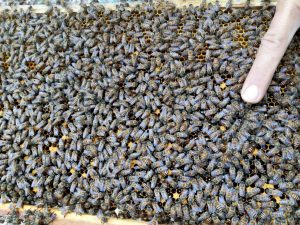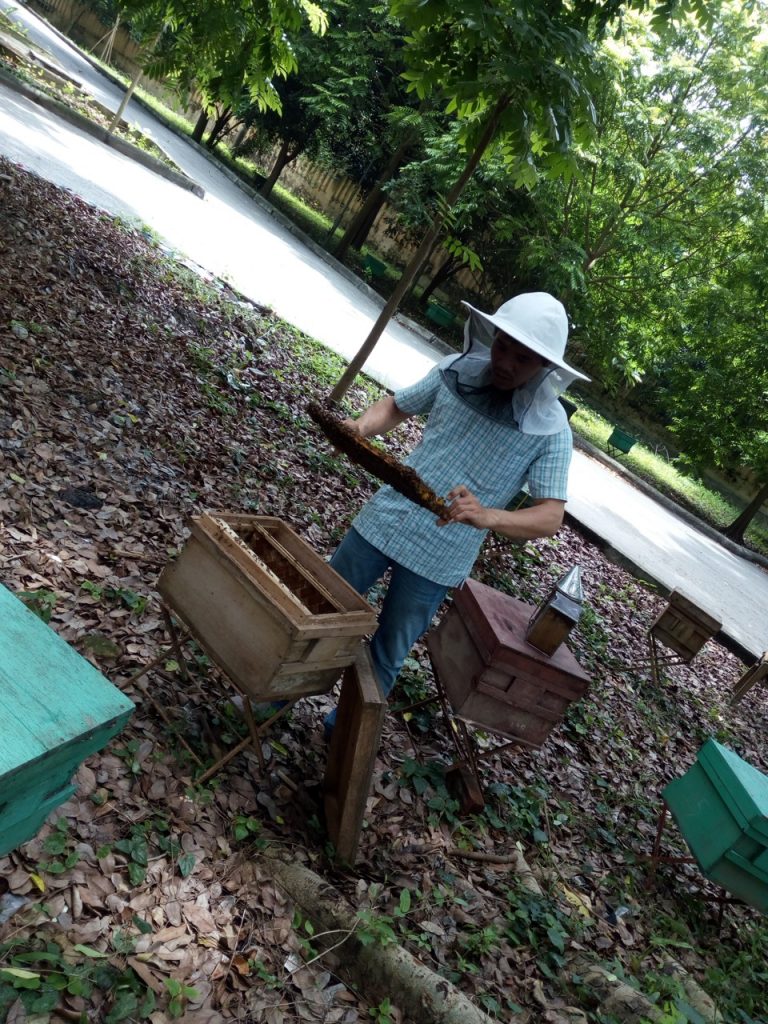Phew, finally got to the end of the photovoice process - at least the practical part - and it was a hectic last week. With hindsight a two week window between the discussions and the exhibition would have been more manageable, especially considering the 16-hour round trips involved.
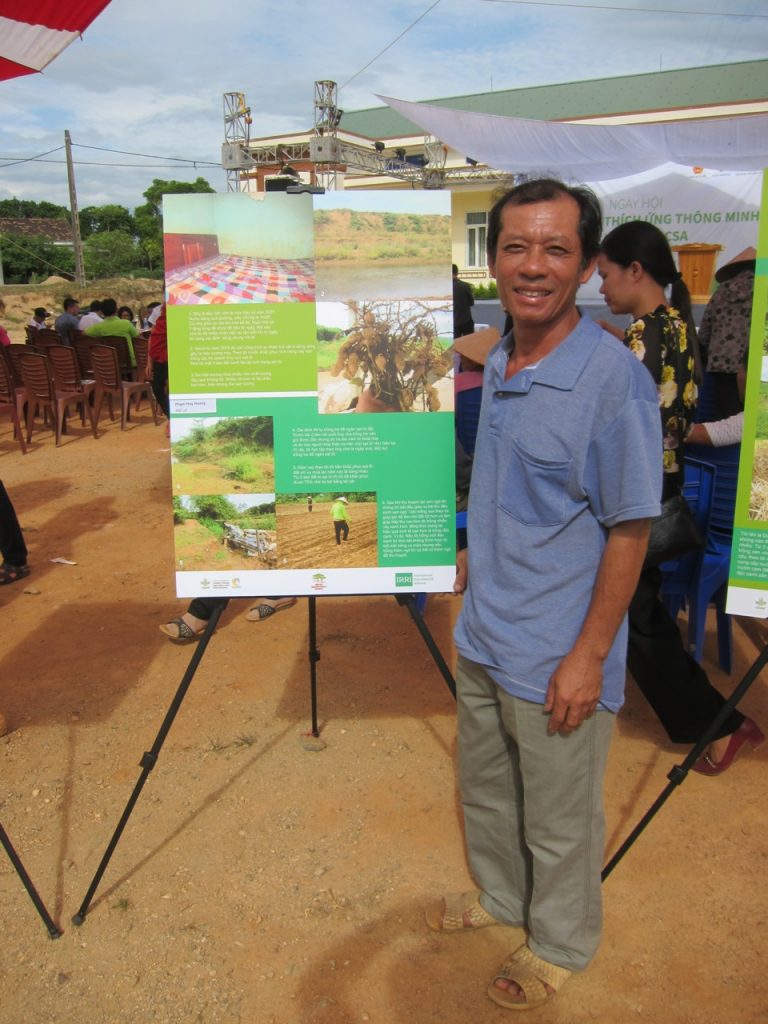
I travelled back to My Loi on the Tuesday night bus with Hamy and Trung, and all I could think with every jolt and shudder of the bus was that the prints we had in the hold were going to get wrecked, so it was a real relief when, at 4.30am, we pulled them out unscathed in Ky Anh. We crashed a couple of hotel rooms occupied by ICRAF staff already there and after an hour or two rest it was time to get busy with final day of prep in My Loi - setting up all the stands and photos, inviting the farmers who would present to come and practice (and trying not to get in the way).
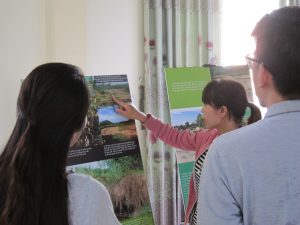
Thursday saw the event itself, hosted by ICRAF (World Agroforestry Centre) together with the Farmers Union, and it was bigger than I'd expected - a big outdoor stage with sound system, a canopy-covered seating area, dancing and singing performances.
In terms of CSA, the main presentations were the photovoice exhibition, and presentations on 3D models made by groups of farmers over the previous few days. The event was covered by local TV and other news media and from what I can gather, the response seems to have been positive. You can see a news report here.
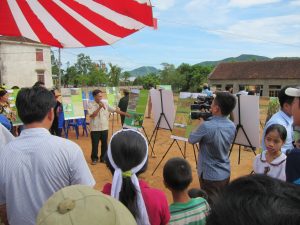
Probably the most severe and oft-cited impacts of climate changes here in Ky Son province were the impacts of drought and heat, and severe rainfall events - with several participants reporting loss of formerly productive lands. Some participants pointed out the influence of forestry practices on slopes (clear-cutting of acacia) and the need for landscape-scale bank stabilisation, using bamboo, for example. I found the following image and caption particularly striking in relation to landslides and soil loss:
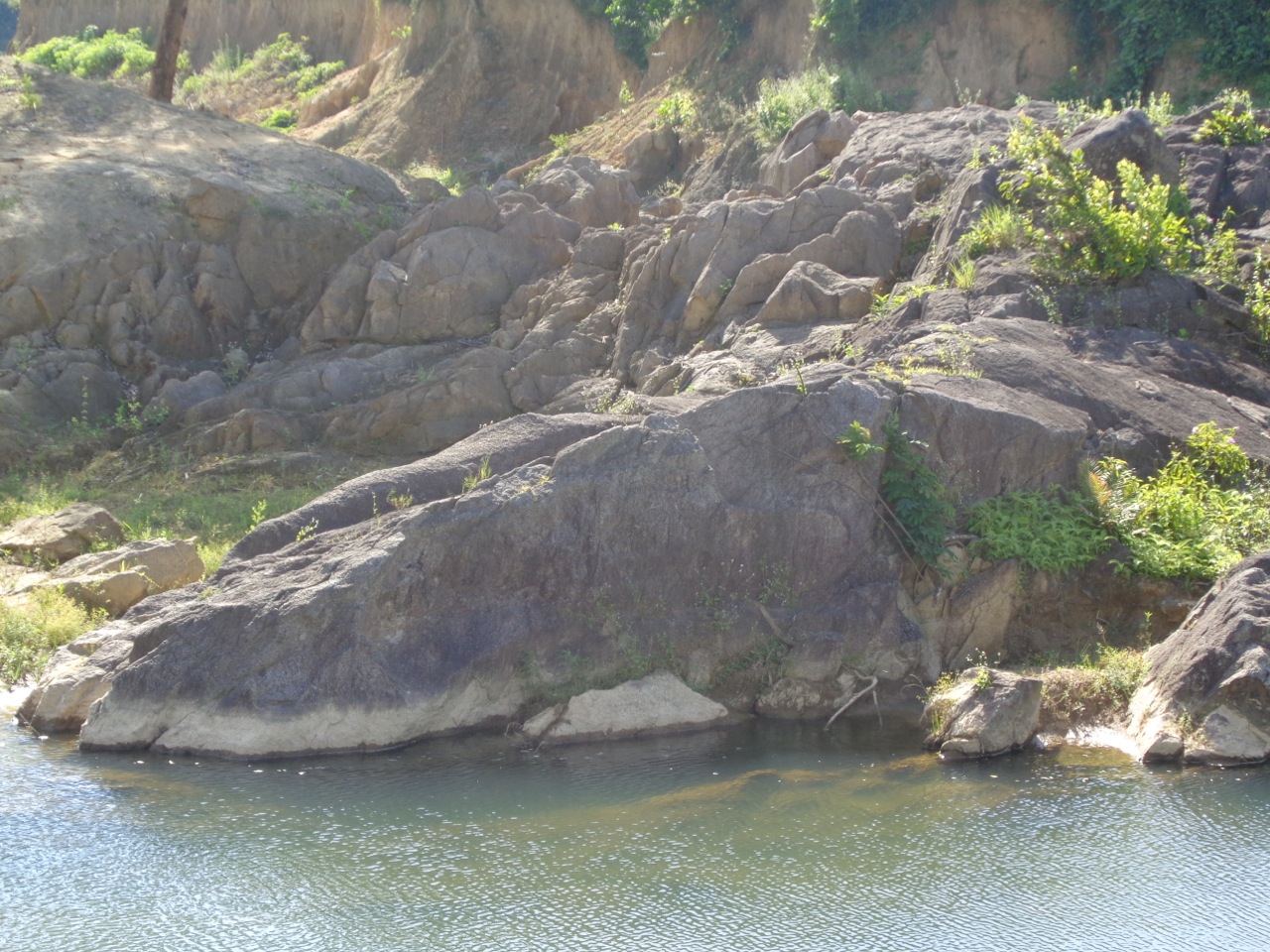
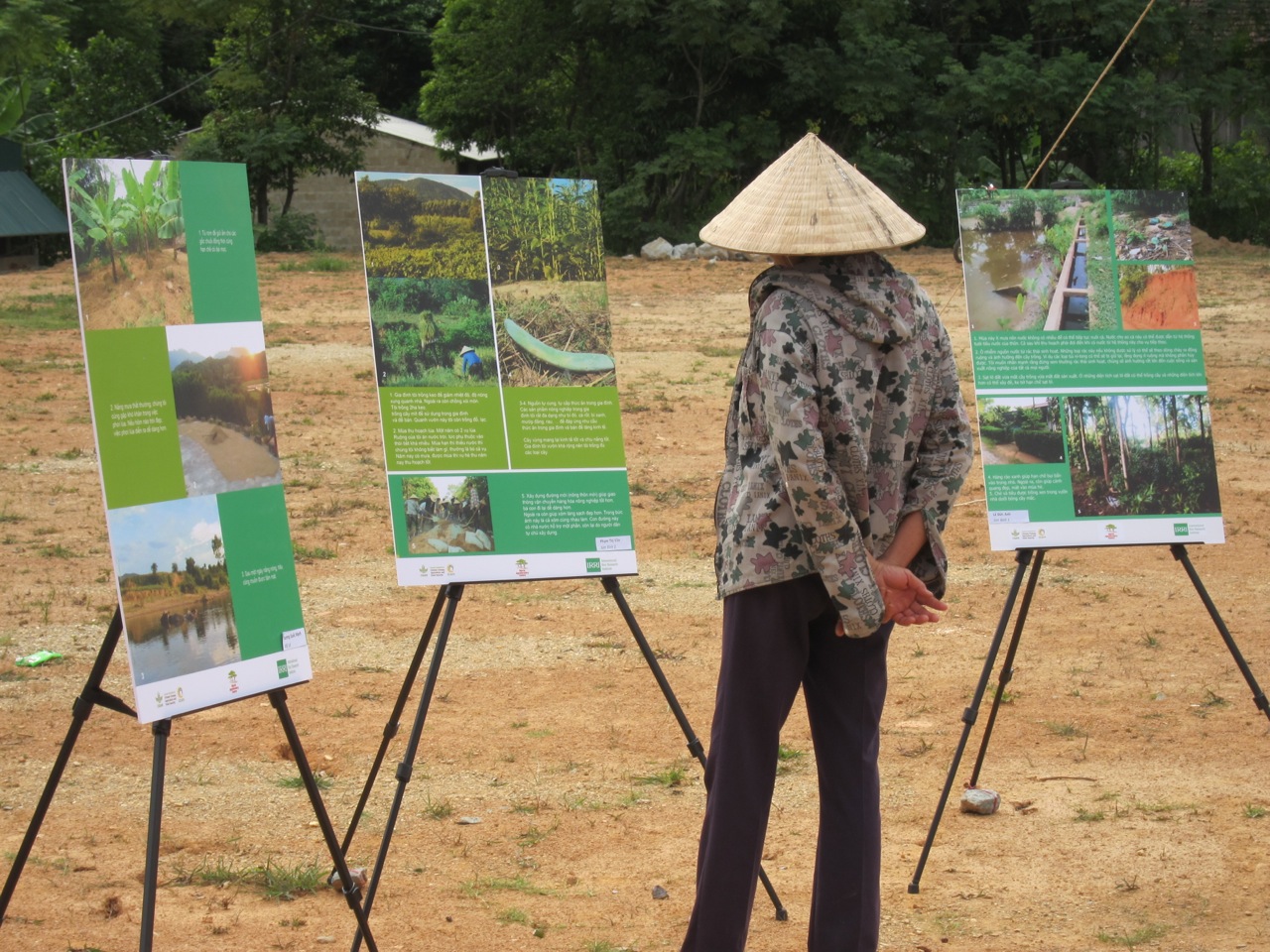
Some feedback on the event:

